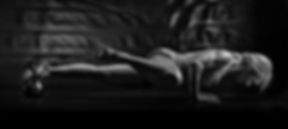Spending more time with a neutral pelvis can help protect your lower back, and promote efficient movement potential. Here's why and how.
Since the position of the pelvis is a major factor in determining how the rest of the body is aligned, it is key to emphasise stabilisation of the pelvis and lumbar spine both statically and dynamically in all positions, and throughout all movements. A neutral pelvis and spine is the most stable and optimal shock absorbing position and a good place from which to promote efficient movement patterns, and a healthy spine.

Experimenting with pelvic movement and placement
Articulate your pelvis to understand how its placement affects the position of your spine, particulary the lumbar-spine (lower back) in the first instance.
Tilting the pelvis excessively anteriorly, or forwards, increases lumbar extension. Tilting the pelvis posteriorly, or backwards (or pelvic tuck) increases your lumbar flexion.

In a neutral position, the natural anteriorly convex curve of the lumbar spine is present. In most cases, when standing the triangle formed by the ASIS and the pubis symphysis (PS) on your pelvis, should be vertically stacked (See picture 'a').
If you now move to lying supine (face up), neutral alignment should not be achieved by forcibly arching the back, but rather by allowing the weight of the sacrum to rest on the floor.
With the transversus abdominis engaged, no strain should be felt through the spinal extensors in the lumbar area. If muscular tension occurs, shift the pelvis slightly toward a posterior placement. It is more important for the lumbar area not to strain than for the ASIS and PS to lie in the horizontal plane.
For example, someone with large gluteals might actually create an exaggerated lordosis (increased arch) in the lumbar spine by trying to have the ASIS and PS lie in the same plane.
What is an "imprint" spine position
An imprinted position combines a slight posterior pelvic tilt with slight lumbar flexion. The normal curve of the lumbar spine lengthens toward flexion by engaging the oblique abdominals (side of your trunk) to bring the pelvis and the rib cage closer together. When supine, the pubic bone may be slightly higher than the ASIS. The pelvis is not so tilted that the sacrum curls off or loses contact with the floor.
It is not necessary to press the lower back all the way into the floor or to tuck under by overusing the rectus abdominis and gluteal muscles as this may decrease stability. The degree of contact between the lumbar spine and the Mat will differ from person to person.
When should I use an "imprint"
An imprinted position should be used to ensure stability of the pelvis and lumbar spine, if neutral alignment cannot be stabilised. When there is weakness in the obliques and other abdominals, placing them in this slightly shortened position can help maintain their engagement.
Testing stability pelvis and lumbar-spine stability
Neutral
Lying supine, with pelvis neutral, knees bent and feet flat on floor, test stability in a neutral position by sliding one foot along the floor, then drawing it back in. Limit the range of motion to where the lumbopelvic region can be stabilised.
Inhale To slide foot away. Exhale To return.
Neutral to Imprint Inhale Maintain a neutral alignment. Exhale Contract abdominals and imprint. Inhale Maintain an imprinted position. Exhale Return to neutral.
The transversus abdominis remains engaged throughout while the obliques shorten during imprint, and lengthen during return to neutral. Try lifting one or two feet off the floor to test the stability of the imprint.
All our programmes, whether class or personal sessions focus on ensuring correct positioning and developing strength and stabilisation allowing you to function optimally.
Feel free to get in touch with Kelly, our head Pilates director, with any questions regarding your training, or check our Class Schedule for classes to suit.
